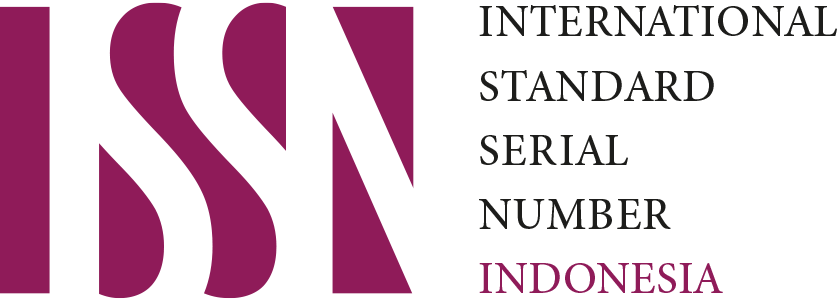Academic Integrity in Indonesia: Undergraduate Students’ Views on Plagiarism
Abstract
Keywords
References
Jereb, E., Perc, M., Lammlein, B., Jerebic, J., Urh, M., Podbregar, I., & Sprajc, P. (2018). Factors Influencing Plagiarism in Higher Education: A Comparison of German and Slovene Students. Slovenian Research Agency. https://doi.org/ 10.1371/journal.pone.0202252
Fatimah, F & Wulandari, I. (2018) Perception of Plagiarism among Students of Higher Education in Indonesia. A Biannual Academic Journal On Academic Language, Literary, and Cultural Studies. https://doi.org/10.21776/ub.alphabet.2018.01.01.04, p. 30-40.
Ashworth, P., Freewood, M., & Macdonald, R. (2003). The students' life world and the meanings of plagiarism. Journal of Phenomenological Psychology, 34(2), 257 – 78.
Jones, KO., Reid., JMW., & Bartlett., R. (2005). Students Plagiarism and Cheating in an IT Age. Proceedings of the International Conference on Computer Systems and Technologies, Varna, Bulgaria. ISBN 954 – 9641 – 42 – 2.
Fishman T. (2009). We Know it When We See it is not Good Enough: Toward a Standard Definition of Plagiarism racism that Transcends Theft, Fraud, and Copyright. Paper presented at the 4th Asia Pacific Conference on Educational Integrity, NSW, Australia. Available from: http://www.bmartin.cc/pubs/09-4apcei/4apcei-Fishman.pdf
Ashworth, P., Bannister, P., Thorne, P., & Students. (1997). Guilty in Whose Eyes? University Students’ Perceptions of Cheating and Plagiarism in Academic Work and Assessment. 22(2), p. 187-203. https://doi.org/10.1080/0307507971233138103
Hu, G & Lei, J. (2014). Chinese University Students’ Perceptions of Plagiarism. Taylor & Francis Group, 25(3), p. 233-255. http://www.tandfonline.com/10.1080/10508422.2014.923313
Borg, E. (2000). Citation Practices in Academic Writing. Patterns and perspectives: Insights into EAP writing practices, p. 26-42. Reading, UK: Centre for Applied Language Studies.
Flint, A., Clegg, S., & Macdonald, R. (2006). Exploring staff perceptions of students plagiarism. Journal of Further and Higher Education, 30(2), p. 145-156.
Ashworth, P., Freewood, M., & Macdonald, R. (2003). The students' life world and the meanings of plagiarism. Journal of Phenomenological Psychology, 34(2), 257 – 78.
Jereb, E., Urh, M., Jerebic, J. & Sprajc, P. (2017). Gender Differences and The Awareness of Plagiarism in Higher Education. Soc Psychol Edu. https://doi.org/10.1007/s11218-017-9421-y
Ursachi, G., Horodnic, I, A., & Zait, A. (2015). How reliable are measurement scales? External factors with indirect influence on reliability estimators. Procedia Economic and Finance, 20, p. 679 – 686.
Yemisi, B. (2012). Awareness and incidence of plagiarism among undergraduates in a Nigerian private University. African Journal of Library, Archies and Information Science. https://www.researchgate.net/publication/290023589
Ehrich, J., Howard, S. J., Mu, C., & Bokosmaty, S. (2016). A comparison of Chinese and Australian university students’ attitudes towards plagiarism. Studies in Higher Education, 41(2), 231–246. https://doi.org/10.1080/03075079.2014.927850
Cooper, H. (2016). Principles of Good Writing: Avoiding Plagiarism. American Psychological Association. https://blog.apastyle.org/apastyle/2016/05/avoiding-plagiarism.html
Prihantini, F. N & Indudewi, D. (2016). Kesadaran dan Perilaku Plagiarisme dikalangan Mahasiswa (Studi pada Mahasiswa Fakultas Ekonomi Jurusan Akutansi Universitas Semarng). Jurnal Dinamika Sosial Budaya, 18(1), p. 68-74.
Yi, N. (2020). Perceptions of plagiarism by biomedical researchers. An online survey in Europe and China. BMC Medical Ethics, 1-16.
Hussein, M, G. (2022). The awareness of plagiarism among postgraduate students at Taif University and its relationship to certain variables. Cogent Social Sciences. 8(1), p, 1-19. https://doi.org/10.1080/23311886.2022.2142357
DOI: https://doi.org/10.24853/elif.7.1.71-78
Refbacks
- There are currently no refbacks.
Abstracting/Indexing |
 |  |  |  |  |
 |  |  |  |  |
 |  |  |  |  |
 |  | |||
English Language in Focus (ELIF) is published by This work is licensed under
|






9.png)
2.png)






